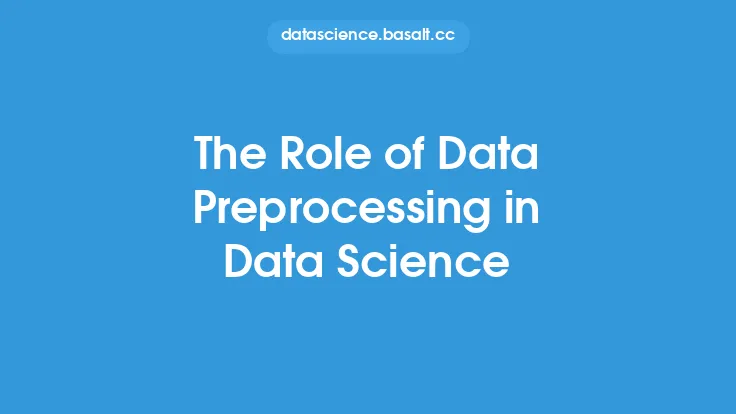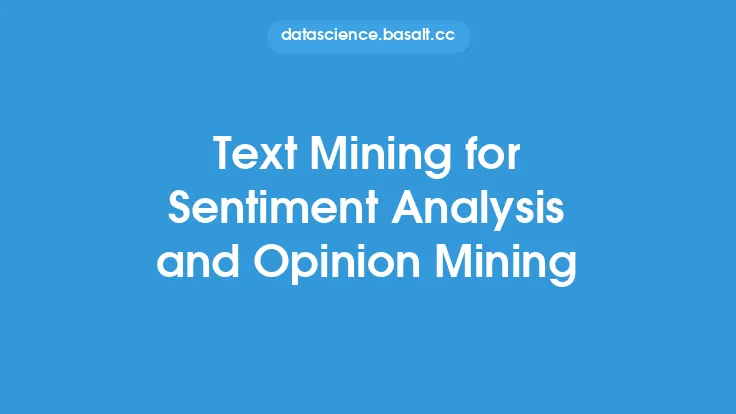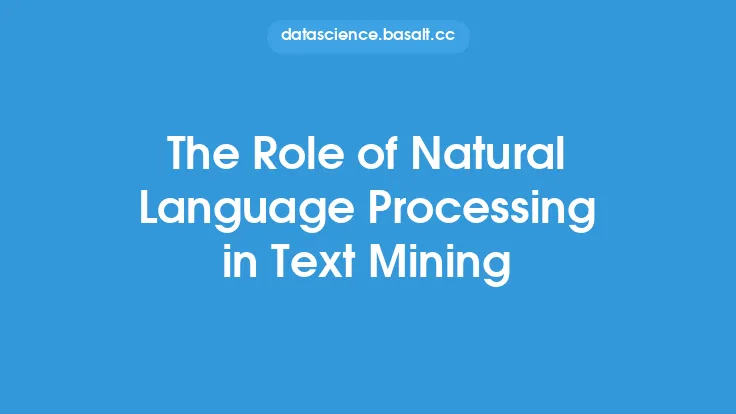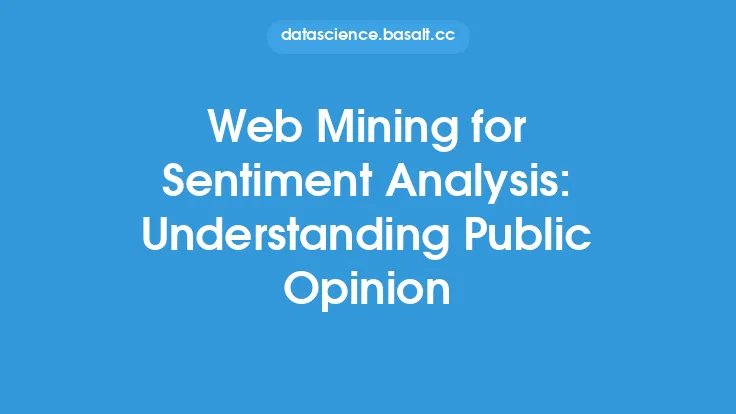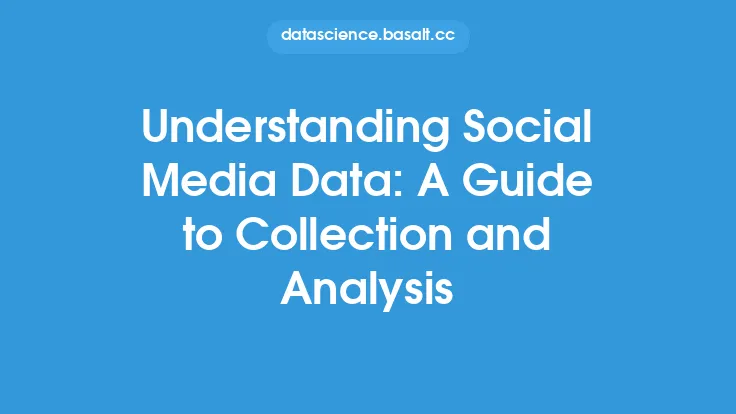Natural Language Processing (NLP) is a subfield of machine learning that deals with the interaction between computers and humans in natural language. It involves a range of techniques and tools to process, analyze, and generate human language data. One of the crucial steps in NLP is text preprocessing, which is the process of cleaning, normalizing, and transforming text data into a format that can be used by machine learning algorithms. In this article, we will delve into the world of text preprocessing in NLP, exploring its importance, techniques, and applications.
Importance of Text Preprocessing
Text preprocessing is a critical step in NLP because it directly affects the performance of machine learning models. Raw text data is often noisy, unstructured, and contains irrelevant information, which can negatively impact the accuracy of NLP models. Text preprocessing helps to remove noise, reduce dimensionality, and transform text data into a format that can be easily processed by machines. By doing so, it enables NLP models to focus on the meaningful patterns and relationships in the data, leading to better performance and more accurate results.
Text Preprocessing Techniques
There are several text preprocessing techniques used in NLP, including:
- Tokenization: breaking down text into individual words or tokens
- Stopword removal: removing common words like "the", "and", etc. that do not add much value to the meaning of the text
- Stemming and Lemmatization: reducing words to their base form to reduce dimensionality and improve comparison
- Removing special characters and punctuation: removing characters that do not add much value to the meaning of the text
- Removing HTML tags and URLs: removing HTML tags and URLs that can interfere with the analysis
- Handling out-of-vocabulary words: dealing with words that are not recognized by the model
- Text normalization: converting all text to lowercase, removing accents, and performing other normalization tasks
Text Preprocessing Tools and Libraries
There are several text preprocessing tools and libraries available, including:
- NLTK (Natural Language Toolkit): a popular Python library for NLP tasks
- spaCy: a modern Python library for NLP that focuses on performance and ease of use
- Gensim: a Python library for topic modeling and document similarity analysis
- Stanford CoreNLP: a Java library for NLP that provides a wide range of tools and resources
- TextBlob: a simple Python library for text analysis that provides a simple API for text preprocessing
Applications of Text Preprocessing
Text preprocessing has a wide range of applications in NLP, including:
- Text classification: text preprocessing is used to prepare text data for classification tasks like spam detection, sentiment analysis, and topic modeling
- Information retrieval: text preprocessing is used to improve the accuracy of search engines and information retrieval systems
- Machine translation: text preprocessing is used to prepare text data for machine translation tasks
- Sentiment analysis: text preprocessing is used to prepare text data for sentiment analysis tasks
- Topic modeling: text preprocessing is used to prepare text data for topic modeling tasks
Challenges and Future Directions
Text preprocessing is a challenging task, especially when dealing with large volumes of text data. Some of the challenges include:
- Handling noise and ambiguity: text data can be noisy and ambiguous, making it difficult to preprocess
- Dealing with out-of-vocabulary words: out-of-vocabulary words can be challenging to handle, especially in languages with limited resources
- Preserving context: text preprocessing can sometimes lose context, leading to inaccurate results
- Scalability: text preprocessing can be computationally expensive, making it challenging to scale to large volumes of data
Despite these challenges, text preprocessing remains a crucial step in NLP, and researchers are continually working to improve text preprocessing techniques and tools. Some of the future directions include:
- Using deep learning techniques: deep learning techniques like convolutional neural networks and recurrent neural networks can be used for text preprocessing tasks
- Using transfer learning: transfer learning can be used to adapt pre-trained models to new languages and domains
- Using multimodal processing: multimodal processing can be used to combine text with other modalities like images and audio
Best Practices for Text Preprocessing
Here are some best practices for text preprocessing:
- Use a combination of techniques: use a combination of text preprocessing techniques to achieve the best results
- Experiment with different tools and libraries: experiment with different tools and libraries to find the one that works best for your task
- Evaluate the performance of your model: evaluate the performance of your model on a held-out test set to ensure that text preprocessing is not overfitting or underfitting
- Use preprocessing pipelines: use preprocessing pipelines to automate the text preprocessing process and reduce errors
- Document your preprocessing steps: document your preprocessing steps to ensure reproducibility and transparency.

